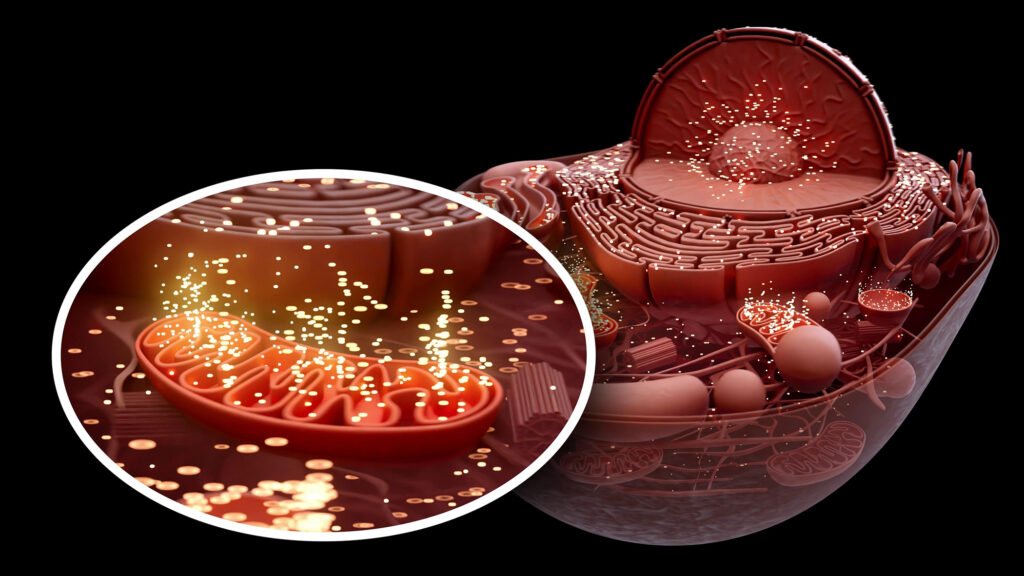Aging isn’t just a slow countdown of birthdays—it’s a progressive and cumulative biological decay. While the wrinkles and stiff joints grab the headlines, the molecular reality is messier: a cascade of stress signals, inflammatory molecules, and failing repair systems. One of the chief culprits driving this decline is cellular senescence. These are cells that have exited the cell cycle due to damage or stress but remain metabolically active. Worse yet, they become biochemical arsonists, secreting inflammatory signals, matrix-degrading enzymes, and pro-fibrotic molecules. Collectively known as the senescence-associated secretory phenotype (SASP), this toxic stew disrupts tissue function and promotes disease.
For years, scientists treated senescent cells as bystanders—a harmless consequence of aging. That perception has shifted. They are now recognized as drivers of chronic disease: from metabolic disorders and fibrosis to cancer relapse and neurodegeneration. Naturally, the next question followed: what happens if we get rid of them?
Traditional senolytics, like dasatinib and quercetin, offered one answer. They induce apoptosis in senescent cells by targeting survival pathways. But these drugs are transient, lack precision, and sometimes cause collateral damage. Enter the next generation: engineered immune cells—and some surprisingly natural ones—trained to hunt and eliminate senescent cells with the kind of precision usually reserved for cancer therapy.
Senolytic CAR-T Cells: Immune System, Reloaded
CAR-T cells—chimeric antigen receptor T cells—are genetically engineered immune cells originally developed to treat cancers like leukemia and lymphoma. By equipping T cells with synthetic receptors, scientists enabled them to recognize specific antigens and mount attacks with devastating efficacy. The success of CAR-T therapies in oncology begged the question: could these same strategies be turned against the rogue cells of aging?
In a breakthrough study published in Nature Aging, researchers developed CAR-T cells that target the urokinase-type plasminogen activator receptor (uPAR), a protein commonly upregulated in senescent cells. In aged or high-fat-diet mice, a single dose of uPAR-targeted CAR-T cells reduced senescent cell burden, improved glucose metabolism, and even restored physical fitness. What made this remarkable was the durability. Unlike small molecules that require repeated administration, these CAR-T cells persisted and continued patrolling the tissue for months—effectively setting up an immune surveillance system against aging.
Another promising target is the NKG2D receptor. Senescent cells often upregulate ligands recognized by this receptor, making them visible to immune cells equipped with NKG2D-based CAR constructs. These NKG2D-CAR-T cells were shown to clear senescent fibroblasts and astrocytes, reducing inflammation and tissue dysfunction. In murine and primate models, they reversed liver fibrosis and improved lung and kidney pathology without damaging healthy tissue. Notably, these effects were achieved with a single administration, and with a better safety profile than conventional senolytics.
CAR-NK Cells: The Off-the-Shelf Killers
While CAR-T therapies are powerful, they require personalization—a patient’s own T cells must be harvested, engineered, expanded, and reinfused. This is time-consuming, costly, and logistically challenging. Natural killer (NK) cells offer a different approach. These innate immune cells are part of the body’s first line of defense, and unlike T cells, they don’t require a perfect antigen match to function. This makes them ideal for universal, off-the-shelf therapies.
In recent studies, adoptive NK cell infusions in aged mice and humans showed measurable senolytic activity. Mice treated with NK cells exhibited reduced senescent burden across multiple tissues—liver, lungs, kidney, adipose, and eye. These improvements translated into better physical performance and reduced inflammatory cytokines. In humans, two NK cell infusions led to significant reductions in markers of cellular senescence (like p16 and p21) and dampened systemic inflammation for up to 90 days.
Researchers are now engineering CAR-NK cells to enhance their specificity and persistence. Targets include NKG2D ligands and other surface proteins selectively expressed on senescent cells. While still early, the combination of NK cell flexibility and CAR technology could offer a scalable senolytic platform with fewer manufacturing hurdles.
Gamma Delta T Cells: Nature’s Overlooked Assassins
Just as the spotlight turns toward engineered immune cells, an unexpected contender has stepped forward: γδ T cells. These unconventional lymphocytes, distinct from the traditional αβ T cells used in CAR therapies, don’t require MHC presentation to recognize stressed or senescent cells. Instead, they use pattern-recognition strategies that resemble the innate immune system—with the adaptability of adaptive immunity.
Recent studies show that expanded human Vγ9Vδ2 γδ T cells can selectively destroy senescent fibroblasts and endothelial cells by engaging both their T-cell receptor and NKG2D. Blocking either receptor reduces cytotoxicity; blocking both virtually eliminates it. In a mouse model of idiopathic pulmonary fibrosis, these cells reduced senescent burden, lowered fibrosis and inflammation, and even extended survival.
What’s more, γδ T cells appear to resist senescence themselves. This makes them a rare tool: simultaneously potent, durable, and less prone to exhaustion. Their capacity for off-the-shelf use and their ability to surveil multiple types of senescent signals—not just uPAR or NKG2D—make them one of the most exciting frontiers in the senolytic space.
Cellular Reprogramming: The Great Reset
If senolytics are the cleanup crew, cellular reprogramming might be the ultimate renovation team. Instead of removing damaged cells, this strategy aims to reset their epigenetic clock—restoring youthful gene expression and function. Inspired by the Yamanaka factors (Oct4, Sox2, Klf4, and c-Myc), scientists have shown that transient expression of these genes can rejuvenate cells without converting them to pluripotent stem cells.
In mouse models, partial reprogramming has restored muscle regeneration, reversed kidney fibrosis, improved metabolic parameters, and even extended lifespan by over 30%. In one of the most striking demonstrations, aged mice treated with partial reprogramming showed restored optic nerve function and improved cognitive performance.
However, this technology walks a fine line. Too much reprogramming can erase cellular identity or promote tumorigenesis. The challenge is to deliver just enough reset to restore function without tipping into cancer. Researchers are developing switchable and tissue-specific delivery systems to navigate this tightrope. Human trials are on the horizon, including applications in stroke recovery and age-related macular degeneration.
Immunotherapy Leads, Reprogramming Complements
Taken together, these therapies signal a reinvention of the immune system as an anti-aging tool. Senolytic CAR-T, CAR-NK, and γδ T cells now act as elite cleanup crews—programmed, engineered, or naturally adapted to find and eliminate the toxic residue of time, targeting the worst offenders that disrupt homeostasis. Meanwhile, cellular reprogramming aims to reboot the aging software, restoring cellular function from within.
These are not competing paradigms, but complementary strategies. Some cells need to be removed; others are worth saving. A truly effective anti-aging therapy may require both: purging what can’t be fixed and resetting what can.
The implications stretch far beyond cosmetics or longevity for its own sake. Clearing senescent cells can restore organ function after chemotherapy, reduce cardiovascular risk, and improve insulin sensitivity. Reprogramming can enhance tissue repair, extend healthspan, and delay the onset of neurodegenerative disease. In the long run, these tools may let us not only live longer but live better.
The first wave of human trials is already underway. Scientists are tweaking delivery vectors, refining dosing schedules, engineering next-generation constructs, and even reactivating ancient immune sentinels like γδ T cells. The goal is no longer to merely add years to life, but to add life to years. What we’re witnessing is the beginning of a new kind of medicine—where aging itself is treated as a modifiable condition, not an unchangeable fate.
And maybe, just maybe, the future won’t belong to the young. It will belong to the resilient.
Sources
- Amor, C., Feucht, J., Leibold, J., Ho, Y.J., Zhu, C., Alonso-Curbelo, D., et al. (2020). Senolytic CAR T cells reverse senescence-associated pathologies. Nature, 583(7814), 127–132. https://doi.org/10.1038/s41586-020-2403-9
- Colnaghi, M., Sciarretta, S., Liu, Y., et al. (2024). Targeting senescent cells with NKG2D-CAR T cells improves metabolic function and tissue repair. Cell Death & Disease, 14, 383. https://doi.org/10.1038/s41420-024-01976-7
- Brenner, M., Chen, L., Singh, R., et al. (2025). γδ T Cells Target and Ablate Senescent Cells in Aging and Alleviate Pulmonary Fibrosis. bioRxiv. https://doi.org/10.1101/2025.05.05.652251
- Ovadya, Y., Martinez, D., Pribluda, A., et al. (2023). NKG2D-CAR T cells eliminate senescent cells in aged mice and nonhuman primates. Science Translational Medicine, 15(689), eadd1951. https://doi.org/10.1126/scitranslmed.add1951
- Xu, M., Pirtskhalava, T., Farr, J.N., et al. (2018). Senolytics improve physical function and increase lifespan in old age. Nature Medicine, 24, 1246–1256. https://doi.org/10.1038/s41591-018-0092-9
- Lu, Y., Brommer, B., Tian, X., et al. (2020). Reprogramming to recover youthful epigenetic information and restore vision. Nature, 588, 124–129. https://doi.org/10.1038/s41586-020-2975-4
- López-Otín, C., Blasco, M.A., Partridge, L., Serrano, M., & Kroemer, G. (2013). The Hallmarks of Aging. Cell, 153(6), 1194–1217. https://doi.org/10.1016/j.cell.2013.05.039
- Antoni, L., Schmid, D., Wagner, V., et al. (2024). Senolytics: From pharmacological inhibitors to emerging immunotherapies. NPJ Aging, 4, 7. https://doi.org/10.1038/s41514-024-00138-4
- Xuewen Deng, Hiroshi Terunuma (2024). Adoptive NK cell therapy: a potential revolutionary approach in longevity therapeutics. Immunity & Ageing, 21(1), 5. https://doi.org/10.1186/s12979-024-00312-4
- Takahashi, K., & Yamanaka, S. (2006). Induction of pluripotent stem cells from mouse embryonic and adult fibroblast cultures by defined factors. Cell, 126(4), 663–676. https://doi.org/10.1186/s12979-024-00451-2
- Shuaiqi Wang et al., (2025). Recent Advances in Aging and Immunosenescence: Mechanisms and Therapeutic Strategies. Cells, 10(5), e123456. https://doi.org/10.3390/cells14070499
- Wang, T-W & Nakanishi, M. (2024). Immune surveillance of senescence: potential application to age-related diseases. Trends Cell Biol., 3, 1490302. https://doi.org/10.1016/j.tcb.2024.06.007













